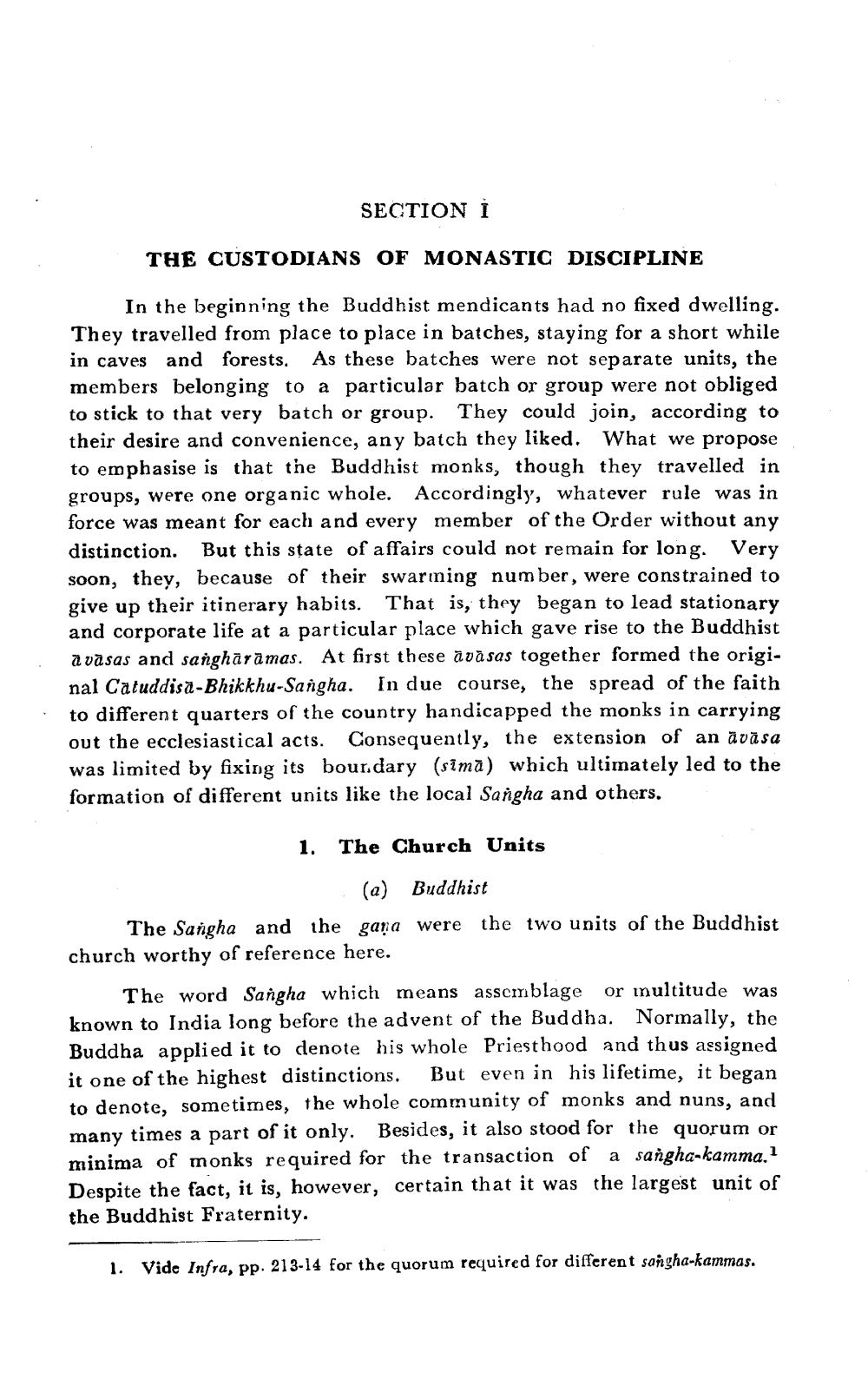________________
SECTION 1
THE CUSTODIANS OF MONASTIC DISCIPLINE
In the beginning the Buddhist mendicants had no fixed dwelling. They travelled from place to place in batches, staying for a short while
res and forests. As these batches were not separate units, the members belonging to a particular batch or group were not obliged to stick to that very batch or group. They could join, according to their desire and convenience, any batch they liked. What we propose to emphasise is that the Buddhist monks, though they travelled in groups, were one organic whole. Accordingly, whatever rule was in force was meant for each and every member of the Order without any distinction. But this state of affairs could not remain for long. Very soon, they, because of their swarming number, were constrained to give up their itinerary habits. That is, they began to lead stationary and corporate life at a particular place which gave rise to the Buddhist āvāsas and sanghārāmas. At first these avāsas together formed the original Catuddisa-Bhikkhu-Sangha. In due course, the spread of the faith to different quarters of the country handicapped the monks in carrying out the ecclesiastical acts. Consequently, the extension of an ävāsa was limited by fixing its bourdary (sima) which ultimately led to the formation of different units like the local Sangha and others.
1. The Church Units
(a) Buddhist The Sangha and the gaṇa were the two units of the Buddhist church worthy of reference here.
The word Sangha which means assemblage or multitude was known to India long before the advent of the Buddha. Normally, the Buddha applied it to denote his whole Priesthood and thus assigned it one of the highest distinctions. But even in his lifetime, it began to denote, sometimes, the whole community of monks and nuns, and many times a part of it only. Besides, it also stood for the quorum or minima of monks required for the transaction of a sangha-kamma.1 Despite the fact, it is, however, certain that it was the largest unit of the Buddhist Fraternity.
1. Vide Infra, pp. 213-14 for the quorum required for different sangha-kammas.




